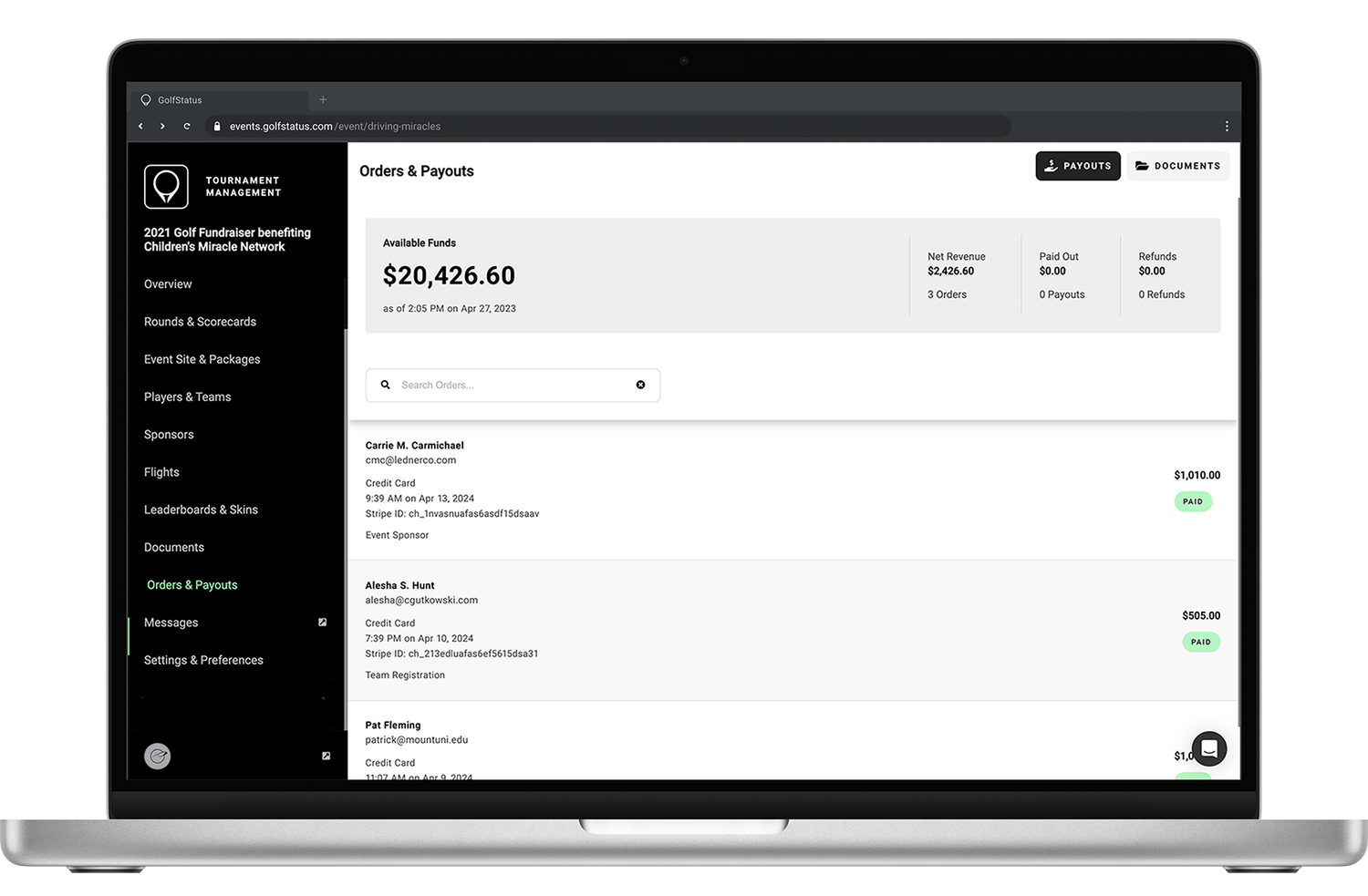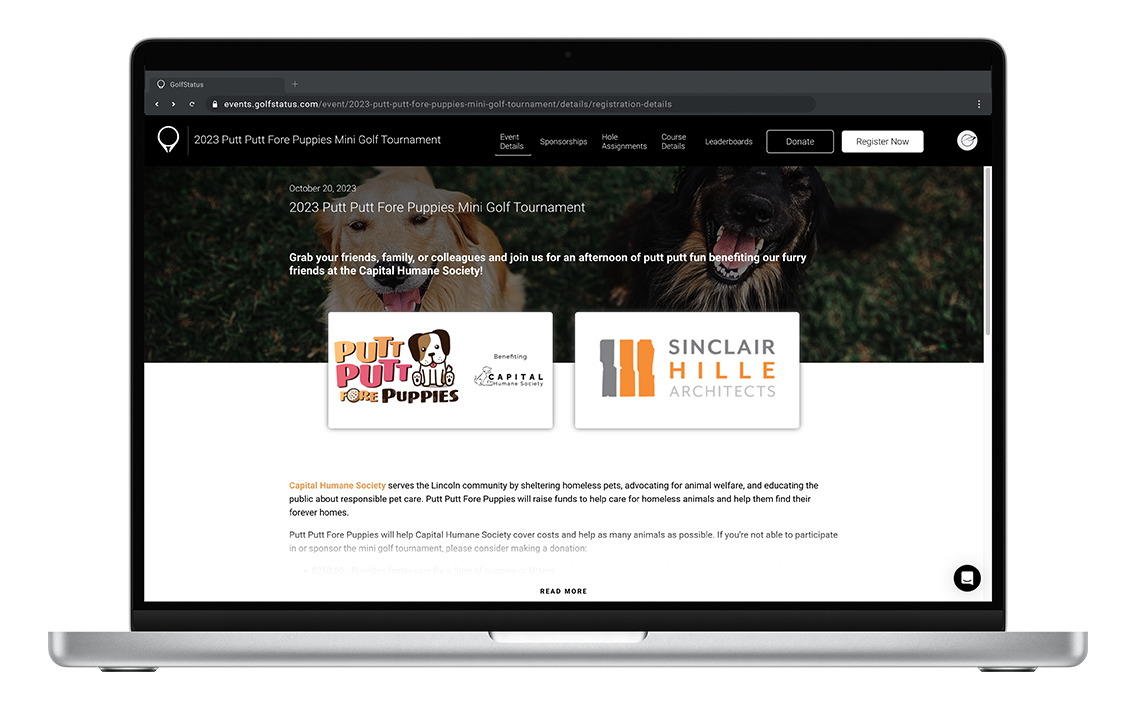Partner Snapshot
Mahoney Golf Course in Lincoln, Nebraska is part of the city’s robust municipal golf program. Head Golf Pro Jonathan Benson (JB) has been with Mahoney for nearly 20 years, nine of them as Head Pro.
Mahoney was built in 1976, the third of the city’s five courses. The par 70 course boasts some of the most challenging par four holes in the city, and as JB says, “is more difficult than some golfers think!” Its large, fast greens make for great playing conditions and multitude of trees present a challenge for every golfer.
JB loves the city’s approach to running its golf program, allowing pros to work as independent contractors within specific parameters. He also has the freedom to hold course-hosted golf events to engage golfers and the Lincoln community at large, getting them to the course for a day of fun.
The challenge
When JB and his predecessor launched Mahoney’s first event, the Mahoney Masters, they did all the prep work manually, taking registration and credit card information over the phone or in-person when a golfer would stop in the pro shop (and hoping the information was written down correctly) and tracking it all on a big, single access spreadsheet. Leading up to and on event day, they would spend 15 or more hours creating scorecards and cart signs, not to mention the time spent flighting results and breaking ties by hand.
All this manual work came with major challenges that took up valuable staff time. What’s more, it was often difficult to collect payment upfront. “When our staff would expand over the summer to 15 part-timers that worked the pro shop, it was a big problem to make sure they took payments when someone registered,” JB says. “We dealt with a huge number of no-shows without prepayment, sometimes up to 20% of registered golfers,” he says. He needed a tool to scale the course’s events while saving his staff time and effort.
The solution
A part-time staffer at Mahoney, Frank Cuddy, was also interning at GolfStatus and mentioned how its tournament management software would be helpful for managing tournament signups. “My first reaction was, ‘you mean I don’t have to do this over the phone?’” JB laughs. GolfStatus was a perfect fit for JB and his team, with robust enough features to streamline event prep but simple enough any staff can jump in and find the tools and information they needed.
“I haven’t seen any part of GolfStatus that I don’t like,” JB says. “We can spend two hours prepping for an event instead of 15. The support we get from GolfStatus is great.”
the results
No More Manual Signups
The online registration feature is what first drew JB to GolfStatus. “We were spending so much time on the phone, so anything that can cut down on that is huge,” he says. Online registration changed all that. “Everything is online these days so it makes sense to do this online too,” JB explains. Golfers choose their team packages, skins, and mulligans and pay directly through the website, giving them an increased confidence that their information is handled securely, as opposed to having a staff member write down their credit card information. “Even if someone calls, we now send them to the website to register,” JB says.
JB says having their branding on the event website is an added bonus, and if they have any sponsors for the events, they get great exposure.
Mahoney Golf Course’s event website for the Mahoney Masters, held every April.
easy communication
JB uses GolfStatus’ messaging feature to promote each event to past participants and other avid golfers in the area, which has helped Mahoney’s events grow significantly. He’s also able to easily share updates, the day’s itinerary, and other reminders without having to hunt down golfer emails and pulling them into a different platform. “I love being able to communicate with teams leading up to the tournament,” JB says.
More Golfers, More Events
The Mahoney Masters is a two-person scramble held the Saturday of Master’s week. In its first few years, the event attracted 60 to 80 golfers. But once JB started leveraging GolfStatus, the tournament regularly fills with 160 players. “We didn’t fill events until we started partnering with GolfStatus,” JB says. “Being able to promote tournaments online and have golfers register online has been amazing for our golf course.”
“We didn’t fill events until we started partnering with GolfStatus,” JB says. “Being able to promote tournaments online and have golfers register online has been amazing for our golf course.”
The success of the Mahoney Masters led JB to add three additional course-hosted events powered by GolfStatus:
Mahoney North Side Scramble, a one-day four-person scramble
Mahoney Open, a two-person scramble the week of the U.S. Open
Mahoney Fantasy Football Scramble, which plays on fantasy football points
This slate of tournaments is great from a business perspective. It gets golfers to the golf course with guaranteed rounds and cart rentals and boosts sales across the golf course: food and beverage, merchandise, and gift certificates.
Printouts, Flighting & Tiebreakers
Automating the time-consuming aspects of a golf event is a huge advantage of using an online event management platform. Golfer information is easily accessible in the software’s backend, where JB and any of his staff can access it to make team pairings and hole assignments quickly and easily.
Before GolfStatus, custom printouts were a major time suck. “We would have to type everything into Excel and into a template, which took a long time and often had errors because we had to decipher handwritten golfer information,” JB says. Now, “we can do it in minutes!” Professionally formatted cart signs, scorecards, and alpha lists are auto generated—all staff has to do is click print.
Mahoney is starting to lean into live scoring a bit more. Teams record and submit their scores via the GolfStatus mobile app, which syncs to live leaderboards in real time. Not only does live scoring let golfers see current standings, but it’s also a time-saver when it comes to finalizing the tournament results. “I don’t have to type in the scores, they’re all there,” JB says. The software will flight the results and break ties automatically—with the ability to manually change them if necessary—so they don’t have to rifle through paper scorecards. “We’re able to announce results, award prizes, and get people done faster than ever.”
Golfstatus for every golf event
Golf facilities like Mahoney Golf Course benefit as much from GolfStatus’ tournament management tech as event organizers. Facility staff and the planning team can share access in GolfStatus’ backend to manage golfer and sponsor information, finalize team pairings and hole assignments, and save time from start to finish. Want to learn more about how your organization or golf facility can save time and raise more money with GolfStatus? Hit the button below to get in touch!









































